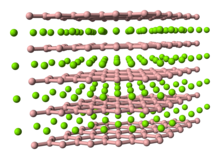Professional industry ceramic supplier, silicon nitride, silicon carbide, aluminum nitride and any other kinds of ceramics.
Overview of Hafnium Diboride HfB2
Hafnium diboride belongs to ultra-high temperature ceramics, which is a ceramic composed of hafnium and boron. Its melting temperature is approximately 3250 °C. It is an unusual ceramic with relatively high thermal and electrical conductivity, and has the same characteristics as isomorphous titanium diboride and zirconium diboride. It is a gray metal appearance material. Hafnium diboride has a hexagonal crystal structure with a molar mass of 200.11 grams per mole and a density of approximately 10.5 g/cm³.
Hafnium diboride is usually combined with carbon, boron, silicon, silicon carbide and/or nickel to improve the consolidation (sintering) of the hafnium diboride powder. It usually forms a solid through a process called hot pressing, in which heat and pressure are used to press the powder together.

Due to its strength and thermal properties, this material may be used in ultra-high-speed reentry vehicles, such as heat shields or aerodynamic fronts of intercontinental ballistic missiles. Unlike polymers and composite materials, HfB 2 can form an aerodynamic shape and will not ablate during reentry.
Hafnium diboride has also been studied as a new material that may be used in the control rods of nuclear reactors. It has also been studied as a microchip diffusion barrier. If the synthesis is correct, the thickness of the barrier can be less than 7 nm.
Under argon flow, combining HfO 2 and NaBH 4 at 700-900°C to obtain HfB 2 nanocrystals with rose-like morphology: HfO 2 + 3NaBH 4 → HfB 2 + 2Na(g,l) + NaBO 2 + 6H 2 (g)
Hafnium Diboride HfB2 Application
The micro-nano hafnium diboride powder is prepared by a variable current laser ion beam gas phase method. It is gray with metallic luster crystals, with a melting point of 3250°C, high conductivity, and stable chemical properties. It hardly reacts with chemical reagents (except HF) at room temperature. Ceramic materials with high melting point, high thermal conductivity, oxidation resistance and other high-temperature comprehensive properties are mainly used in high-temperature ceramics, high-speed aircraft nose cones, aviation, aerospace and other fields.
1. Coating; crucible lining and chemical equipment; anti-oxidation composite materials; refractory materials, occasions that resist corrosion of molten metal;
2. Thermal enhancement additives; high temperature resistance; anti-oxidation special coatings;
3. It is mainly used as a material for producing composite ceramics; it can be used as a neutron absorber;
4. High-temperature ceramics, high-speed aircraft nose cones, aviation, aerospace and other fields.
The price of hafnium diboride HfB2
The price of hafnium diboride HFB2 will vary randomly with the production cost of hafnium diboride HFB2, transportation cost, international situation, exchange rate and supply and demand of hafnium diboride HFB2 market. Tanki New Materials Co., Ltd. aims to help various industries and chemical wholesalers find high-quality, low-cost nanomaterials and chemicals by providing a full set of customized services. If you are looking for hafnium diboride HfB2, please feel free to send an inquiry to get the latest price of hafnium diboride HfB2.
Suppliers of Hafnium Diboride HfB2
As a global supplier of hafnium diboride HfB2 powder, Tanki New Materials Co., Ltd. has extensive experience in the performance, application and cost-effective manufacturing of advanced engineering materials. The company has successfully developed a series of powder materials (titanium diboride, silicon hexaboride, molybdenum boride, iron boride), high-purity targets, functional ceramics and structural devices, and provides OEM services.
| Hafnium Diboride Properties | |
| Other Names | hafnium boride, HfB2 powder |
| CAS No. | 12007-23-7 |
| Compound Formula | HfB2 |
| Molecular Weight | 200.112 |
| Appearance | Black Powder |
| Melting Point | 3250 °C |
| Boiling Point | N/A |
| Density | 10.5 g/cm3 |
| Solubility in H2O | N/A |
| Exact Mass | 201.965161 |
| Hafnium Diboride Health & Safety Information | |
| Signal Word | N/A |
| Hazard Statements | N/A |
| Hazard Codes | N/A |
| Risk Codes | N/A |
| Safety Statements | N/A |
| Transport Information | N/A |
